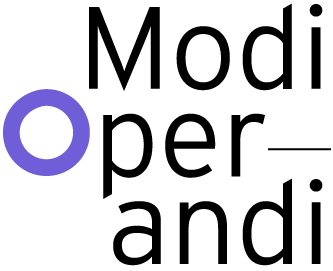PREFACE
‘… a Mondrian painting is not an image of order but an ordering of things’,
G.C. Argan, ‘Architettura e arte non-figurativa’, in Progetto e destino, Il Saggiatore, Milan, 1965.
‘… Points, lines, areas or volumes establish the syntax of sites. All language becomes an alphabet of sites…’
Robert Smithson, ‘Towards the Development of an Air Terminal Site’, Artforum, June 1967.
The critical and cognitive role of architectural language in the modernist tradition strongly affected, though in different ways, the architect’s commitment to society. This matter deserves reconsideration now that the theme of autonomy of the architectural ‘text’, introduced by the postmodern discourse, has marginalised theoretical reflection on the contemporary urban project; a reflection that for a period of time animated the European architectural debate from the Gregotti-directed pages of Casabella.[2]
Today we are witnessing a progressive divergence between architectural practice, solidly locked within the symbolic sphere, and the mechanisms of space production, considered ‘other’ by architecture, since they are strongly affected by markets and political decisions. Increasingly, this separation seems to be a conceptual fracture between the dominion of form – degraded to a tool for representation – and that of processes, which seem to have become an exclusive matter for politics and strategic planning.
Conversely, in the recent debate on urban transformation, the crucial role of design research has been pointed out as a way to better understand how society and the economy are reorganising the ‘form of the territory’.[3] As a matter of fact, the discussion calls into question the increasingly self-referential nature of architecture’s formal strategies, and requires further critical reflection on the agency of architectural language in the process of urban construction. How do the issues related to the urban project affect the traditional boundaries and categories of architectural language?
Indeed, there are no immediate and exhaustive answers to this question, but, as a commentary to Spaces, Poetics and Voids, it seems important to return our attention to how architectural language can act as a tool for spatial investigation, in accordance with the fundamental link that connects the genesis of the language of art to a process of understanding reality.[4]
It was Manfredo Tafuri who, at the end of the 1970s, raised the question connected to the theme of language. In his analysis of the work of certain post World War II architects, he challenged the tendency to consider the universe of forms as a closed system which, through its infinite self-reproduction, ratified its own programmatic, and perhaps fatal, incapacity to affect the ‘structural’ conditions of urban and territorial construction. His argument signalled the progressive and conscious intellectual estrangement of many architects from the conditions that govern the production and the processes of the transformation of inhabitable space. According to Tafuri, they were backtracking along the path trodden by certain exponents of architectural modernity, who had been committed to reforming the discipline in close alliance with planning practices and building production systems.
Drawing on certain passages from Walter Benjamin’s The Author as Producer, Tafuri indicated the need to shift attention from what a work ‘wishes to be’ or ‘wishes to say’ to how it relates to the economy, society and the capitalistic organisation of the territory. A return to this principle makes evident the will to reclaim the authentic ‘function’ of architectural language through a significant shift from what language represents to how language (taken in a metaphoric sense) ‘acts’ within reality, while simultaneously being determined by reality itself.
Tafuri’s reflection was also a radical investigation into how architecture could exert a critical role, not just as a science of signs abandoning itself to the abuses of ‘writing’, but also as ‘techné’, which roots itself in society and its emerging conflicts.
This is a question which is likely to resurface today in increasingly evident forms, particularly if we compare the space of the actual city – which continues to reproduce itself through mechanisms alien to the logic of architecture – with the symbolic redundancy on which architectural objects base their dialogue with the city, reciting the rhetoric of complexity, fragmentation and flexibility, or farcically re-proposing the non-figurative language of the avant-garde.
With reference to the present urban condition, it might be appropriate to draw on Tafuri’s investigation into the function of architectural language in order to re-evaluate the role of ‘intellectual mediator’ that architectural knowledge can play with regard to new social conflicts, political responsibility and the construction of the city as a common good.
In the course of this analysis of Simone Pizzagalli’s work, I would like to focus primarily on two aspects. The first is inherent in the constructive function of architectural language, intended in its broader sense as a procedure that orders reality with the aim of understanding it. Here, language is considered primarily as a tool for knowledge production. This understanding of architectural language is far removed from the idea of an ‘autonomous’ architecture, which asserts itself through a path of linguistic purification, a notion deriving from a revival of the concept of the ‘autonomy of the political’ that was theorised in the 1960s.[5] In this sense, an analysis of the prison space designed by Pizzagalli will be useful in clarifying the meaning of a language that is both critical and constructive.
The second aspect emphasises Pizzagalli’s investigation of the void as a design strategy. I propose the hypothesis that an authentic, analytic reflection on architectural language is not just a reworking or undermining of pre-existing expressive codes, but presupposes a constant ‘openness’ towards examining the transformations occurring within the entirety of the built environment. These transformations are the expression of different ways of living, of a new geography of powers, and of a different rationale of techniques and constructive processes that strongly affect the field of architecture.
